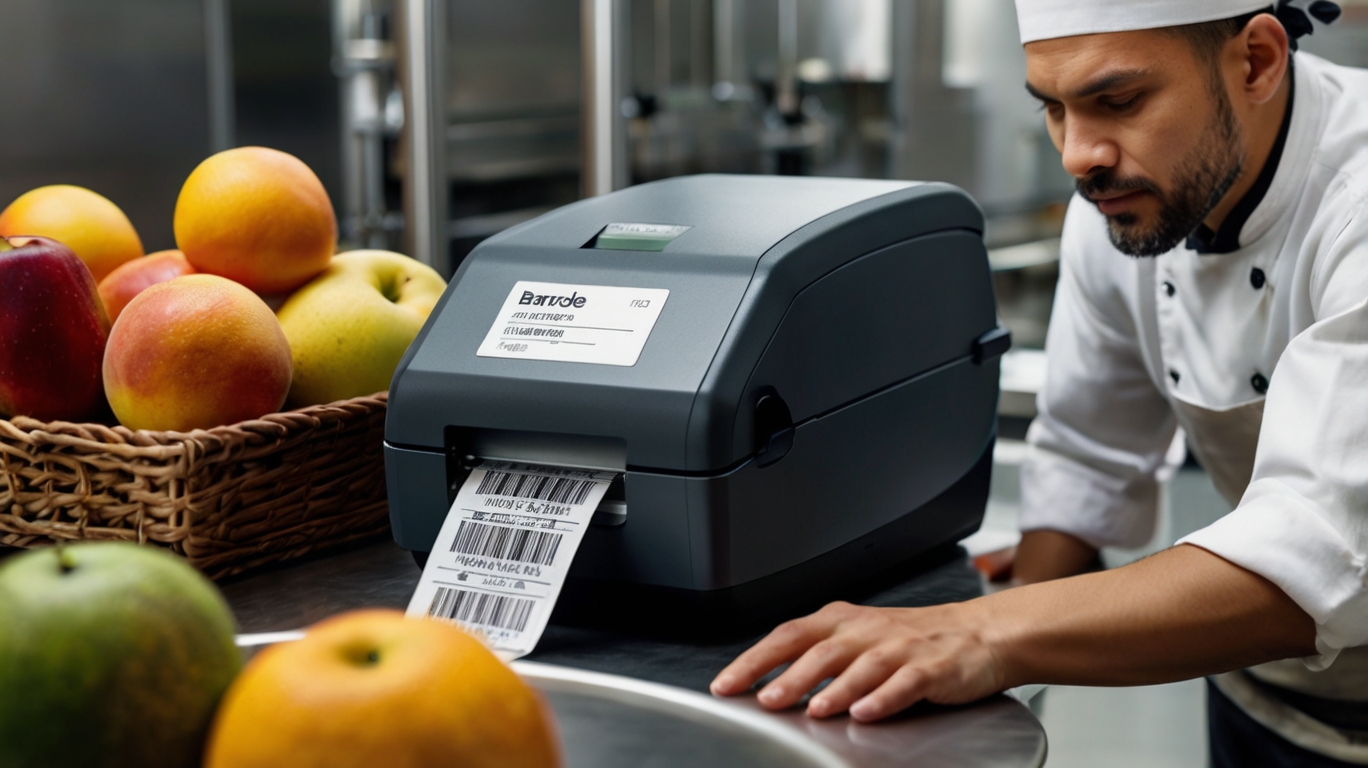Why food industry should use technology to replace hand-written labels
-
 Simon Vinall
Simon Vinall
- Case Study
Introduction
Correct food labelling has been an ongoing concern for the government. Food allergy related deaths have lead to serious investigation. If the food is labelled correctly, what should change in the industry to prevent future food related incidents?
Researchers have chosen a number of food providers to look at the ways they label food and the efficiency of the process including food rotation, preparation and expiration dates.
The results led to the conclusion that food labelling needs to be more accurate. Handwriting takes time and can be misread if not clearly written. Furthermore, according to the latest food regulations, food menus and grab-and-go food should have allergens, calorie and nutrition information clearly presented on a label.
It is important to stay up to date and share findings of the research why hand-written labels should be replaced by digital ones.
Artwork on the labels
On the hand-written labels employees tend to draw product related artwork or smiley faces. There is nothing wrong with that but it adds time to the food labelling process and employees use more time for labelling rather than on the shift duties.
Common issues
Using hand-written labels can be confusing at times. Certain pens take longer time to dry and might cause smearing. Handwriting can be difficult to read if the information was not clearly written (e.g. confusion with numbers 1 and 7). If the employee who wrote the label were not on duty, it would be impossible to clarify what the label said. By handwriting labels, there are higher chances to make spelling mistake or miss an ingredient.
Potential risks
The biggest risk is to make someone sick due to poor food labelling. “Use by” dates are vital in the food industry, so correct date marking is a must. Handwritten dates can be difficult to read and if the food is out of date but was served by accident it can lead to sickness.
Food safety issues can cause financial loss to a brand that may have taken years to grow as well as health problems to customers. To deal with someone who becomes sick usually cost more than food preparation automation in the kitchen.
Automation is the solution
Since food labelling became a central part of the food industry, technology needed to adapt and automation was the best solution. Time-consuming handwritten labels were changed to combine printers with a touchscreen interface, connected to a software application that allows tracking of ingredients, preparation and expiration dates and nutritional information. The technology helped to reduce waste and keep the inventory up to date that helps to save money.
Food labelling and rotation in the kitchen have to be very accurate. Kitchens tend to be extremely busy, so using the latest software that automates labelling is a time and costs saver.
Why food industry should use technology to replace hand-written labels

-
 Simon Vinall
Simon Vinall
- Case Study
Introduction
Correct food labelling has been an ongoing concern for the government. Food allergy related deaths have lead to serious investigation. If the food is labelled correctly, what should change in the industry to prevent future food related incidents?
Researchers have chosen a number of food providers to look at the ways they label food and the efficiency of the process including food rotation, preparation and expiration dates.
The results led to the conclusion that food labelling needs to be more accurate. Handwriting takes time and can be misread if not clearly written. Furthermore, according to the latest food regulations, food menus and grab-and-go food should have allergens, calorie and nutrition information clearly presented on a label.
It is important to stay up to date and share findings of the research why hand-written labels should be replaced by digital ones.
Artwork on the labels
On the hand-written labels employees tend to draw product related artwork or smiley faces. There is nothing wrong with that but it adds time to the food labelling process and employees use more time for labelling rather than on the shift duties.
Common issues
Using hand-written labels can be confusing at times. Certain pens take longer time to dry and might cause smearing. Handwriting can be difficult to read if the information was not clearly written (e.g. confusion with numbers 1 and 7). If the employee who wrote the label were not on duty, it would be impossible to clarify what the label said. By handwriting labels, there are higher chances to make spelling mistake or miss an ingredient.
Potential risks
The biggest risk is to make someone sick due to poor food labelling. “Use by” dates are vital in the food industry, so correct date marking is a must. Handwritten dates can be difficult to read and if the food is out of date but was served by accident it can lead to sickness.
Food safety issues can cause financial loss to a brand that may have taken years to grow as well as health problems to customers. To deal with someone who becomes sick usually cost more than food preparation automation in the kitchen.
Automation is the solution
Since food labelling became a central part of the food industry, technology needed to adapt and automation was the best solution. Time-consuming handwritten labels were changed to combine printers with a touchscreen interface, connected to a software application that allows tracking of ingredients, preparation and expiration dates and nutritional information. The technology helped to reduce waste and keep the inventory up to date that helps to save money.
Food labelling and rotation in the kitchen have to be very accurate. Kitchens tend to be extremely busy, so using the latest software that automates labelling is a time and costs saver.